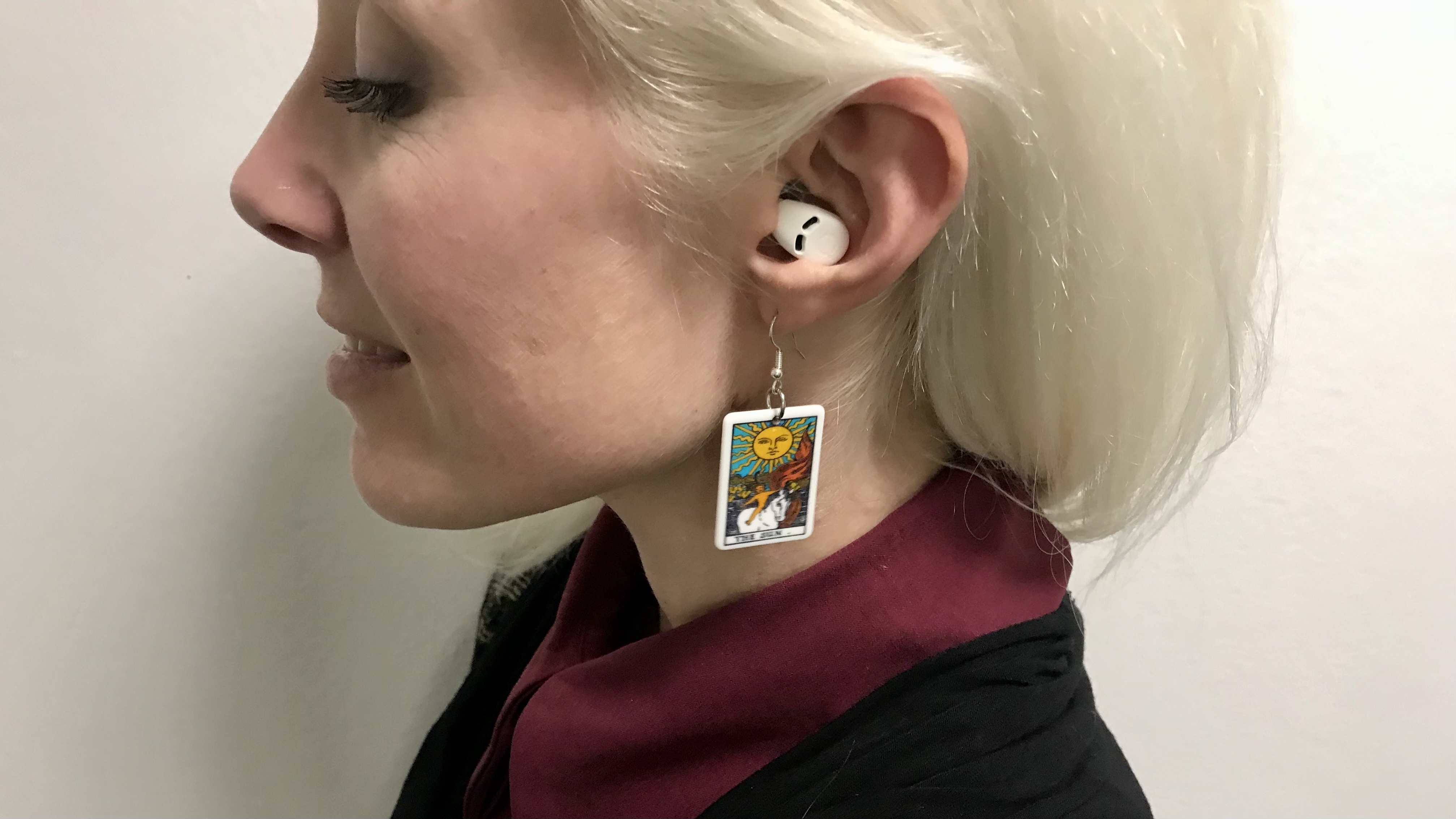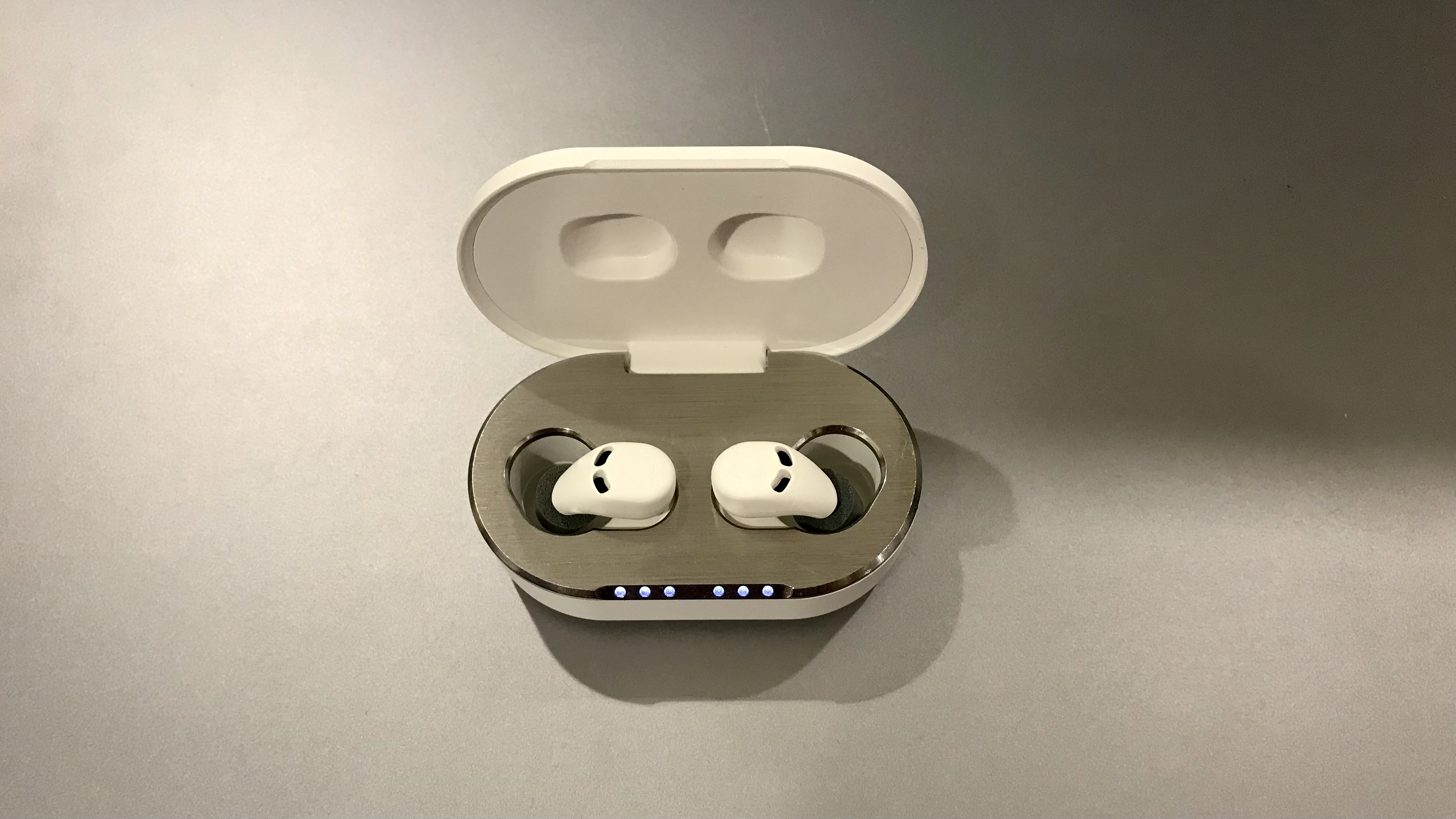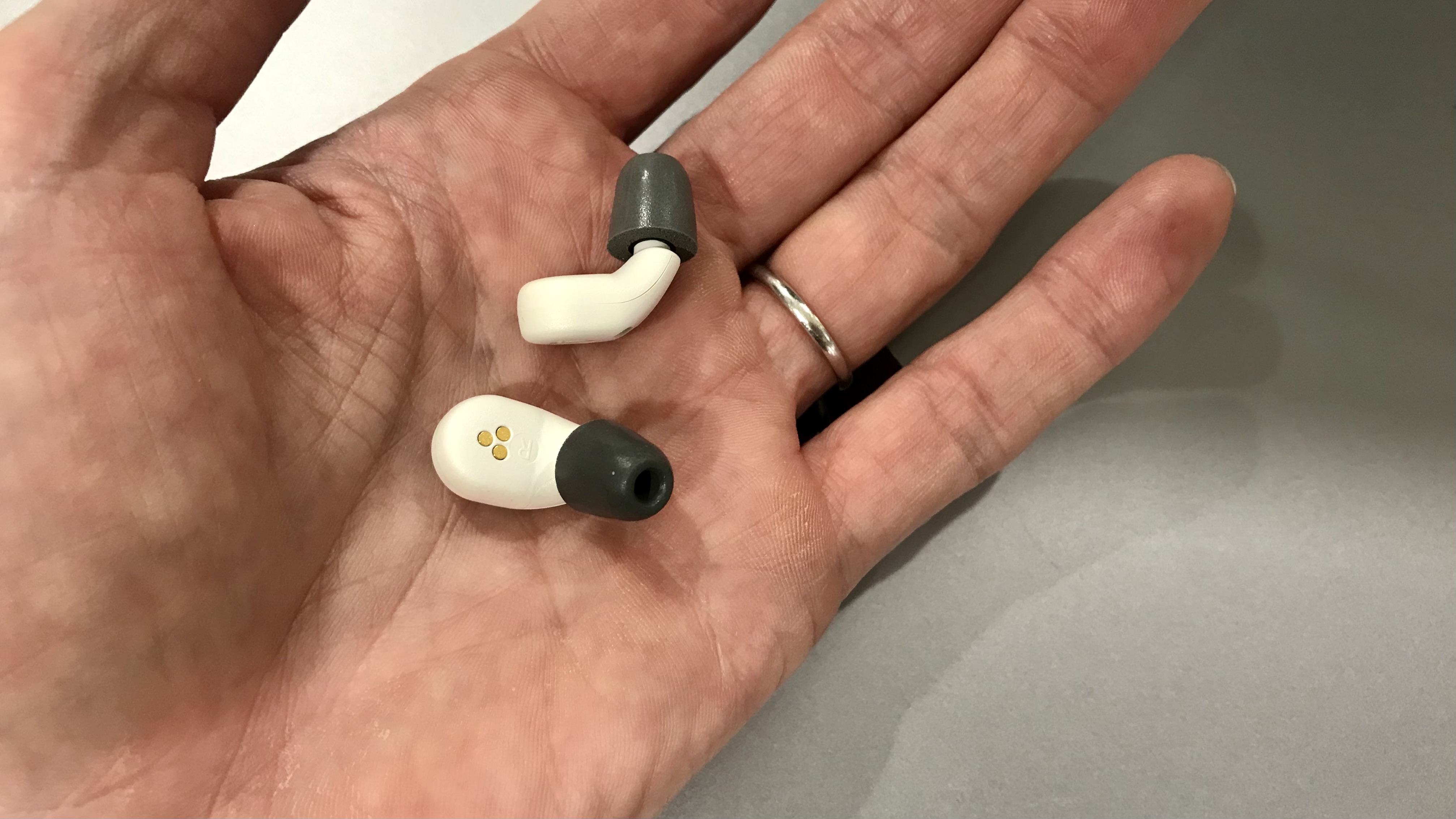I tried noise-cancelling sleep earbuds and they’re a revelation
These tiny ANC beauties finally helped where sleep trackers didn't

When I try to explain my insomnia to the blissfully unaffected, my first port of call is invariably the old adage 'what you focus on expands'.
Imagine the scene: you've not had caffeine since 4 pm. You set your phone to airplane mode an hour ago – and limited your screen time beforehand because of that heavily-documented blue light thing – plus you're certainly tired, both physically and mentally. Every preparation has been made for a good night's sleep!
A gloriously restful night awaits for sure. This whole shut-eye thing is going to be a doddle. Only, it's not. As you toss and turn under your carefully chosen sleep-inducing weighted blanket, cogs keep turning.
Dropping off to the land of Nod is a pipe dream. Thoughts resurface. I must remember to buy food for the weekend tomorrow. Am I actually composing the difficult email I put off earlier, now?! Well, I may as well mentally run through that challenging piece of choreography then. Yes, if I do it like that it'll be awesome – not overthinking is key. Wait, did I remember to file that review for the weekend? And what did my upstairs neighbor mean when they said I wouldn't have to wait long to see the changes happening around here? I should sleep! I need sleep. Everyone needs sleep! Who else do I know who can't do this most basic thing?! Even if I get to sleep right now that's only… not enough. Tomorrow I'll feel awful once again, with only myself to blame.
Sound familiar? I sympathize – and I think I can help. As a tech journalist, I have readily and eagerly turned to various products claiming to train me into achieving better sleep, including the Sleep Cycle app, the Google Nest Hub (2nd Generation) tablet, and the Whoop 4.0 wearable. Now, I don't want to disparage any of these products – all are designed to be very helpful; maybe they will help you. But they didn't work for me. However, after trying a selection of the best sleep earplugs and best sleep trackers, I might have found a solution to my restless nights.
Focusing on not sleeping (aka the ways in which you're failing) isn't the only way

My Whoop wearable told me so much about the sleep I wasn't getting. I now know, for example, that I was waking up 2.6 times per hour, on average. I also know that this is far from optimal and that because of it, most of the sleep I did get was not the good stuff, a.k.a deep sleep and rapid-eye-movement, better known as REM. These are the states in which we really get quality rest and our body gets to recover.
Apparently, I was surviving in a 'get by' state only, rather than 'performing' or at my 'peak'. Sounds a bit like failure, no? And worse, failure despite a comprehensive sleep-coaching wearable's tips and notifications.
Get daily insight, inspiration and deals in your inbox
Sign up for breaking news, reviews, opinion, top tech deals, and more.
I chose to wear the Whoop specifically because it does not have a screen. Why? Because the Google Nest Hub had a screen and, although I liked its Soli Sensor overall, I didn't get on with the three visual circles for sleep – I fixated on them not lining up and turning purple, as they should. I thought I might enjoy occasionally glancing at the Whoop app on my phone to tell me how long I'd slept instead. I was wrong. It isn't Whoop's fault, but to me, the wealth of information it delivered simply read as another litany of errors; another tale of woeful insomnia.
I even set up the vibrating alarm to wake me once I'd achieved my nightly goal, crazy optimist that I am! Not once during my two-week experiment did it actually find me asleep, as my sleep debt accumulated. It was as if I'd fallen into a dark hole of sleeplessness I'd have to claw my way out of at some point to get back to the land of Successful People. Hardly a relaxing thought, is it?
The Sleep Cycle app meanwhile, had me and my partner in stitches about our sleep talking (it records things such as snoring and can play them back to you) but again, it simply acted as damning confirmation of my poor performance in drifting off – and in not staying asleep even if I did.
Two little earbuds, several great nights of sleep (so far)

Before we get too excited, note that I do not expect this solution to work instantly, indefinitely, or for everyone. Sleep is a far more delicate and elusive beast than that. However, I can tell you that it works for me, more often than not. And crucially, at no point will this sleep-promoting item tell you anything about yourself – good, bad, or sleep-deprived. Imagine!
The product is the QuietOn 3 earbuds and they're an interesting hybrid creation. We do not include them in our best sleep earplugs guide since these tiny beauties actually include active noise cancellation and live in a battery-toting charging case. I cannot categorize them as noise-canceling earbuds either for fear of confusion because these buds cannot play your music over Bluetooth. There is no setup pairing process. You take them out of their charging case, fit them correctly and wait. After about 20 seconds you'll feel the ANC tech kick in – and if you're me, you miraculously start to feel sleepy.
Nobody is more surprised than me by that last statement. Typically, I have shunned ANC-toting earbuds for various reasons. These include the oddly nauseating vacuum-like effect they can produce when I'm upwardly mobile, the audible hiss I've experienced on occasion, the way some options have adversely colored and sweetened my music, and the fact that I prefer to hear traffic and approaching strangers alongside my tunes for safety reasons – yes, I know there's usually an ambient aware feature. I prefer to save on the cost of ANC antiphase tech I'll rarely use, opting instead for a set of buds that don't actively nix noise.
After fitting the QuietOn (you sort of pull your ear back and put them in, twisting the housing so that it slips and "locks" behind your meatus or auditory canal) they never fell out during my testing, despite my reservations about this given my small ears and weird, oddly-shaped right ear. They do sit quite deep into your ear, which may take some users a little while to get used to (and some may not like it at all) but for me, this isn't an issue.
Because there's no scope to play music (and when trying to sleep, I tend to stay fairly still) I lie back in bed and immediately feel cocooned. There is no screen to look at, no tips to check in any app, just a bubble of near-silence engulfing me. And then I sleep for eight hours.
I didn't think it would work – often I've written about how the human ear is finely-tuned to treble frequencies and we shouldn't try to cloak that – but what can I say? They work for me. And I still heard my morning alarm.
Now, there are certain safety implications associated with this method – make sure you've locked the door and haven't left the oven on spring to mind – but provided you're relatively secure in your home or you live with a caring partner, I think these earbuds are an excellent pick. Surely they are at least worth a go if you're struggling to sleep, whether or not you live in a noisy household. I do not and yet, the QuietOn 3 have changed my quality of life. I rate them incredibly highly – and I've been sleeping well recently so, you know, I'm likely at my peak…

Becky became Audio Editor at TechRadar in 2024, but joined the team in 2022 as Senior Staff Writer, focusing on all things hi-fi. Before this, she spent three years at What Hi-Fi? testing and reviewing everything from wallet-friendly wireless earbuds to huge high-end sound systems. Prior to gaining her MA in Journalism in 2018, Becky freelanced as an arts critic alongside a 22-year career as a professional dancer and aerialist – any love of dance starts with a love of music. Becky has previously contributed to Stuff, FourFourTwo and The Stage. When not writing, she can still be found throwing shapes in a dance studio, these days with varying degrees of success.